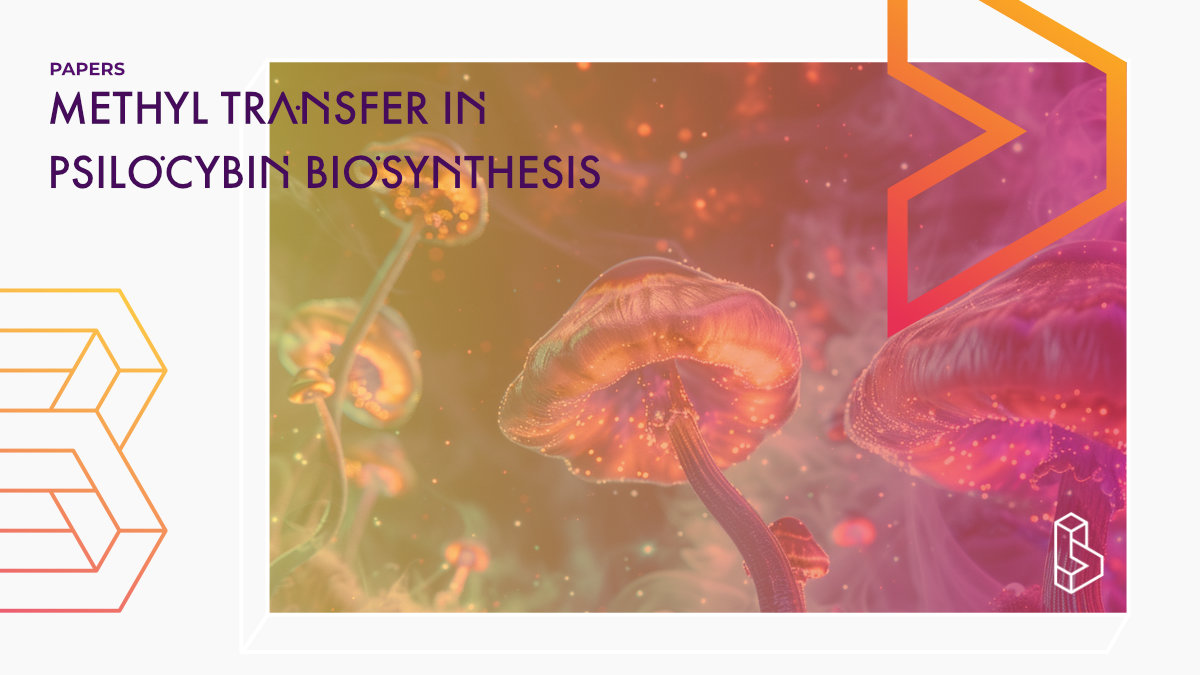This structural study delves into the mechanism of PsiM, the enzyme responsible for the final step in psilocybin biosynthesis. The researchers present high-resolution crystal structures of PsiM, revealing insights into its methylation mechanism. They also propose that PsiM shares evolutionary origins with N6-methyladenosine writers, highlighting its potential for bioengineering to enhance psilocybin’s therapeutic benefits.
Abstract of Methyl transfer in psilocybin biosynthesis
“Psilocybin, the natural hallucinogen produced by Psilocybe (“magic”) mushrooms, holds great promise for the treatment of depression and several other mental health conditions. The final step in the psilocybin biosynthetic pathway, dimethylation of the tryptophan-derived intermediate norbaeocystin, is catalysed by PsiM. Here we present atomic resolution (0.9 Å) crystal structures of PsiM trapped at various stages of its reaction cycle, providing detailed insight into the SAM-dependent methylation mechanism. Structural and phylogenetic analyses suggest that PsiM derives from epitranscriptomic N6-methyladenosine writers of the METTL16 family, which is further supported by the observation that bound substrates physicochemically mimic RNA. Inherent limitations of the ancestral monomethyltransferase scaffold hamper the efficiency of psilocybin assembly and leave PsiM incapable of catalysing trimethylation to aeruginascin. The results of our study will support bioengineering efforts aiming to create novel variants of psilocybin with improved therapeutic properties.”
Authors: Jesse Hudspeth, Kai Rogge, Sebastian Dörner, Maximilian Müll, Dirk Hoffmeister, Bernhard Rupp & Sebastiaan Werten
Summary of Methyl transfer in psilocybin biosynthesis
Psilocybin is the principal natural product of a polyphyletic group of fungi colloquially referred to as magic mushooms. It has been shown to alleviate a variety of psychological conditions, including major depressive disorder, substance dependence and end-of-life anxiety, and is expected to enter phase III clinical trials shortly.
PsiM, an S-adenosyl-L-methionine (SAM) dependent methyltransferase, catalyses the final reaction in the psilocybin pathway, which produces the tertiary amine psilocybin.
We present a comprehensive X-ray crystallographic, biochemical and phylogenetic characterisation of PsiM, which suggests a direct evolutionary relationship between PsiM and post-transcriptional regulators of the METTL16 family.
Find this paper
Methyl transfer in psilocybin biosynthesis
https://doi.org/10.1038/s41467-024-46997-z
Open Access | Google Scholar | Backup | 🕊
Cite this paper (APA)
Hudspeth, J., Rogge, K., Dörner, S., Müll, M., Hoffmeister, D., Rupp, B., & Werten, S. (2024). Methyl transfer in psilocybin biosynthesis. Nature Communications, 15(1), 2709.
Study details
Compounds studied
Psilocybin
Topics studied
Neuroscience
Study characteristics
Bio/Neuro

